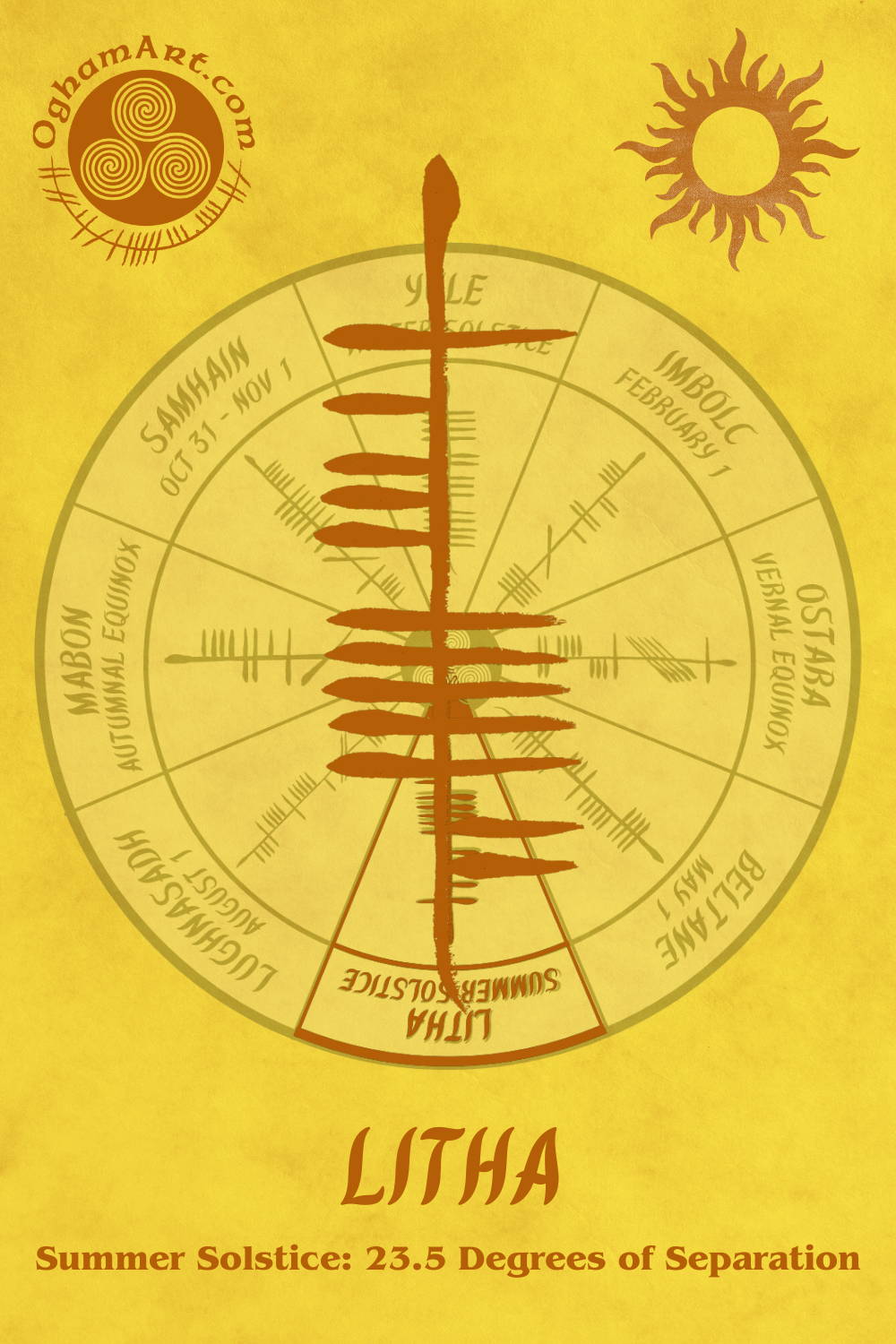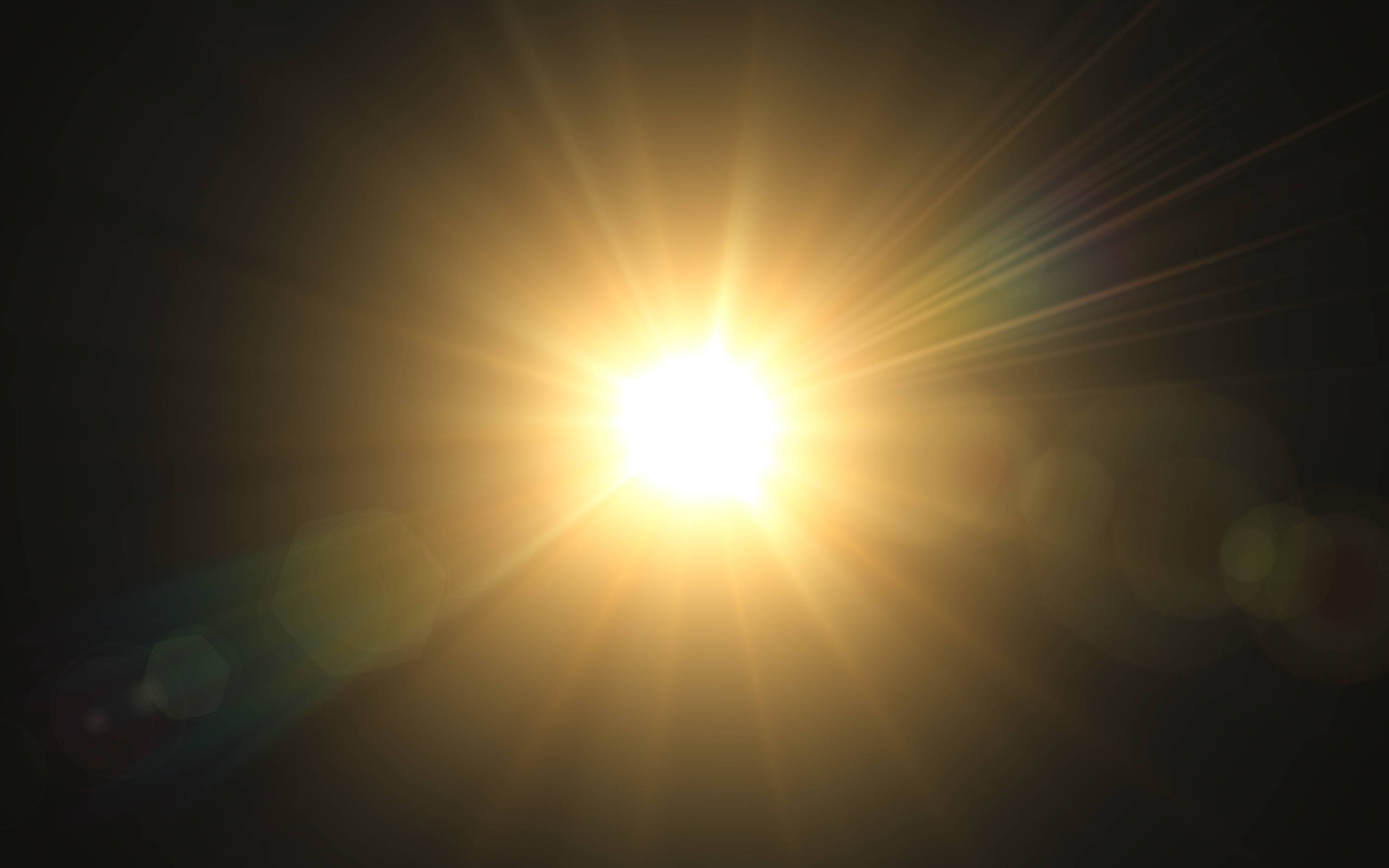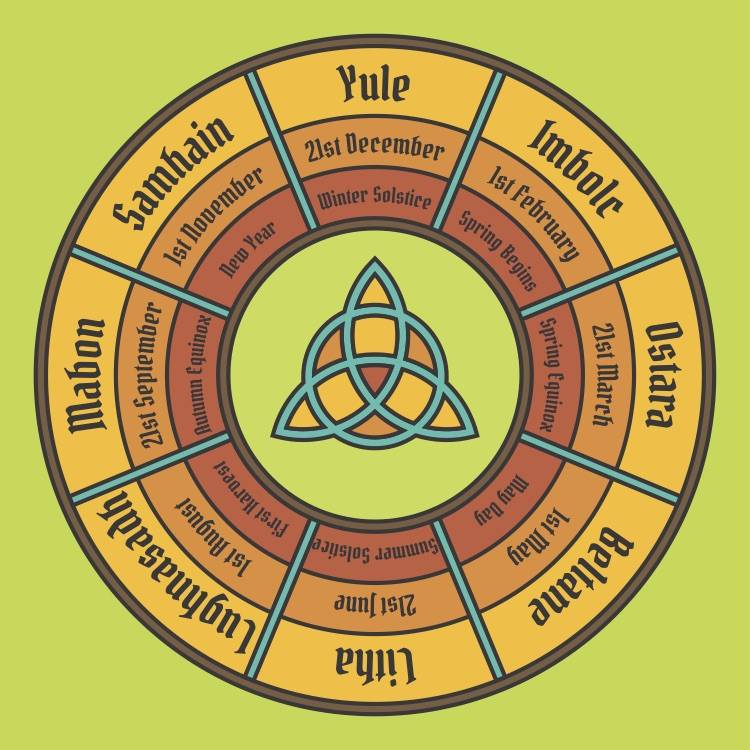
Litha - Summer Solstice: 23.5 Degrees of Separation
Summer Solstice. One out of 365 days yet so many universal connections. Summer solstice, midsummer, St. John’s Day, Litha.... No matter what you call it, the Earth’s tilted axis brings us together in solar celebration.
As humans, we understandably venerate that big ball of plasma in the sky. It provides us with the warmth and energy needed to sustain life on this planet. We rely on it to tell us when to plant, when to rest, when to harvest and when to shed layers.
We schedule our civil and social methodologies by how long it takes for the Earth to revolve around the sun. These solar calendars – from the ancient Egyptians’ use of the rising of Sirius to Pope Gregory XIII adopting the most widely used calendar today, we have depended on old Helios to keep us on track.
Let’s think about how impressive the summer solstice must have been to ancient civilizations. Think Aztec and Maya. Think Celts. Think Stonehenge.
Many structures and monuments were partly erected as solar calendars, surrounding the inhabitants with an almanac specific to their very place of existence. The word “solstice” is from the Latin for solstitium - sol (sun) and stit (stopped or standing).
The sun was believed to stand still on this day, reminding those beneath it of where things stood in their agricultural and spiritual timeline.


Imagine how the summer solstice so greatly affected the Celts.
It was a time of flourishing crops and plentiful pasture. It was a chance to banish evil spirits with the rays of the sun and the flames of bonfires. It was considered a special time for lovers with the nurturing power of the sun promising deeper bonds and fertility. It was celebrated then and it remains a sacred time today.
In the Wheel of the Year, the modern pagan cycle of eight annual festivals, summer solstice (midsummer or Litha) is one of four seasonal holidays along with winter solstice (midwinter or Yule) and the autumnal (Mabon) and vernal (Ostara) equinoxes. The remaining four festivals include Imbolc, Beltane, Lughnasadh and Samhain.[1]
While the festivities at Stonehenge each summer solstice highlight the pagan focus on June 20-22, the international celebrations are varied and equally inspirational. The birth of St. John the Baptist is observed in Christian countries around the world. In Tekufat Tammuz, the summer solstice as named in the Talmud, no one sees his own shadow on this day.[2]
Then there’s the simple joy of 15 hours and 5 minutes of daylight here at the Ogham Art studio. However observed, this day is a true metaphysical unifier of those in this hemisphere today, yesteryear and long ago.
What Does Summer Solstice Mean to Me?
As a native of the northeastern United States, it means the heat is here…and here to stay. In Connecticut, we don’t have the coldest of winters or the hottest of summers but we definitely split our year somewhere between the two extremes of crippling windchill temps and endless sources of sweat.
As a mother, it means the end of the school year, the opening of the pools, the daytrips to amusement parks.
As a traveling artisan and entrepreneur, it means pop-up tents, toll booths, sunscreen, arch supports and lots & lots of water.
As the owner of a Celtic gift business, summer solstice takes on an undeniably special definition. I am reminded of the terrestrial commitment of those who inspire me to do what I do. “People need a spiritual connection whether they realise it or not,” says Patsy Preston, Irish artist and druid. “We can get caught up in consumerism, but we all have a spiritual side to our nature and we all want to connect to the divine in some way.”[3]
On the Summer Solstice, I sit back, (attempt to) connect to the divine and keep one eye open for faeries. Okay, I’ll settle for fireflies….
